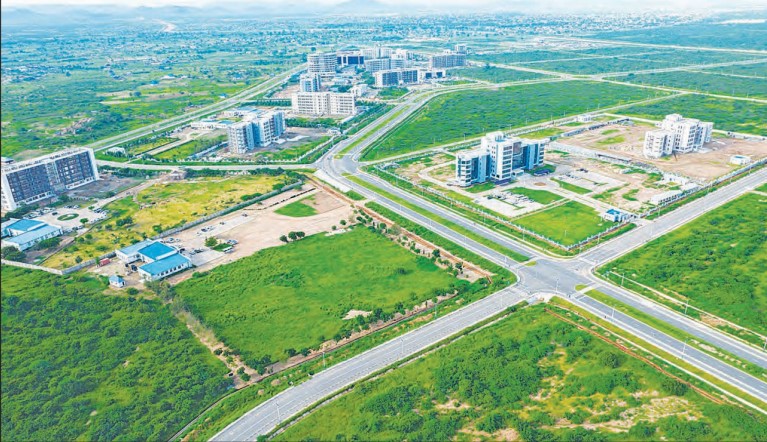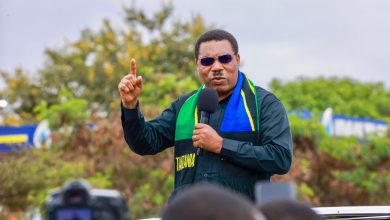How Mwalimu Nyerere’s vision shaped Dodoma, JNHPP

THE idea of relocating Tanzania’s political and administrative capital from Dar es Salaam to Dodoma was once considered a distant dream.
Likewise, the aspiration to generate over 2,000 mega- watts of electricity from the Rufiji River through a hydropower project seemed farfetched for many years. Today, both ambitions— initially championed by the late Mwalimu Julius Kambarage Nyerere—have been turned into reality.
The shift to Dodoma and the completion of the Julius Nyerere Hydropower Project (JNHPP) are tangible mile- stones, jointly realised under the leadership of President Samia Suluhu Hassan and her predecessor, the late Dr John Pombe Magufuli.
In his Current Affairs column published by the Daily News, former Speaker of the National Assembly, Mr Pius Msekwa, described a dream as “a wish to have something, especially one that seems difficult to achieve”, rather than simply a fleeting vision one experiences in sleep.
To illustrate the power of dreams, he referenced the renowned American civil rights leader Dr Martin Luther King Jr, who in his famous 1963 address in Washington, DC, declared: “I have a dream…” Such sentiments reflect the transformative power of visionary thinking.
Theologians have similarly argued that even in the biblical act of creation, humankind was born out of a divine plan and purpose—underscoring the belief that progress often be- gins with an idea.
Nyerere’s dream for hydropower development
According to Mr Msekwa, the JNHPP was a long-held aspiration that spanned generations.
The concept of harnessing the Rufiji River’s potential dates back to the early 1900s during German colonial rule. In 1901, a German engineer named Stiegler led an expedition to survey the area now known as Stiegler’s Gorge. He was killed by an elephant in 1907, but the site retained his name.
During British administration, plans to develop the Rufiji River for flood control and irrigation emerged. Surveys were conducted in the late 1920s by Alexander Telford and again between 1938 and 1940 by Engineer Gilman.
The idea gained further momentum in the 1950s when the Food and Agriculture Organisation (FAO) proposed a larger dam, including a 100-metre wall, with the goal of transforming the Rufiji Valley into a productive agricultural region.
After independence, President Nyerere prioritised industrialisation and modernisation. His Second Five-Year Development Plan placed strong emphasis on hydropower as a foundation for sustainable growth.
This led to the implementation of the Great Ruaha Hydropower Project, which included the construction of Kidatu and Mtera dams. Commenting on the recent commissioning of the JNHPP, Mr Msekwa described it as a landmark moment.
“The government’s announcement that the Julius Nyerere Hydropower Project is nearing completion and is already feeding power into the national grid is indeed great news. It marks the success- ful realisation of Mwalimu Julius Nyerere’s dream. It is, needless to say, a major and historic milestone,” he wrote.
Beyond electricity generation, the dam is set to sup- port water resource management, irrigation, domestic consumption and environ- mental conservation—ensuring water flow in arid regions and maintaining essential ecosystems.
ALSO READ: Nyerere didn’t die for tribal votes, why you? Think Tanzania
Dodoma: From concept to capital
Another pillar of Nyerere’s legacy came to fruition in May 2023, when President Samia officially inaugurated the new State House in Chamwino, Dodoma.
The event symbolised the fulfilment of the plan initiated in 1973 to make Dodoma the official capital of Tanzania. While previous administrations made progress, it was under President Magufuli that the relocation of government offices gained renewed urgency.
The launch of the Government City project in Mtumba, about 30 kilometres from central Dodoma, marked a decisive step. President Samia later acknowledged the continuity of leadership needed to bring such long-term initiatives to completion.
“Each administration that came into power had to con- tribute to this work. This is one of the projects I inherited from John Magufuli, the first being the Tanzanite Bridge and by God’s grace, I will complete them all,” she said.
Dodoma Regional Commissioner Rosemary Senyamule has noted the rapid increase in land value in the capital, driven by its ongoing economic, social and infra- structural transformation.
Speaking during a recent meeting with religious leaders, she observed that the city’s evolution from a modest township into a vibrant administrative hub has created new opportunities.
“In the past, saying you lived in Dodoma often drew surprise. But today, Dodoma is every Tanzanian’s dream city. Land is like gold—it gains value each day,” she said.
Ms Senyamule added that the government has laid the groundwork for investment and public services by ensuring access to clean water, reliable power, paved roads and lawful land acquisition.
Dodoma now boasts mod- ern hospitals, higher learning institutions and serves as home to all central government ministries.
She urged faith leaders to promote peace and moral values amid rapid urbanisation and called on citizens to take advantage of emerging opportunities in agriculture, business, housing and tourism. “Dodoma is no longer a city just for government workers. It is a city of oppor- tunity—for farmers, traders, young people and investors alike. We must ensure no one is left behind,” she said.
Encouraging investment through special zones
The Tanzania Investment and Special Economic Zones Authority (TISEZA) has introduced tailored incentives to attract investment in Dodoma’s Nala Special Economic Zone. Four domestic investors have already expressed intent to invest more than 49.2bn/- in manufacturing at the 607-hectare site, potentially generating over 400 direct jobs.
According to TISEZA Central Zone Manager, Mr Venance Mashiba, the incen- tives include tax reliefs, land access and regulatory support to reduce startup costs.
“The Nala area has been set aside for strategic investment in key sectors such as agro-processing, fast-moving consumer goods, textiles, pharmaceuticals, motor vehicle assembly, solar energy, electronics and building ma- terials,” he said.
From the shifting of the capital to Dodoma, to the launch of one of Africa’s largest hydropower stations, Mwalimu Nyerere’s dreams continue to shape the country’s development trajectory.
These milestones stand not only as symbols of progress but as testaments to the enduring power of vision, leadership and national commitment.





